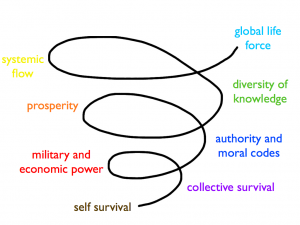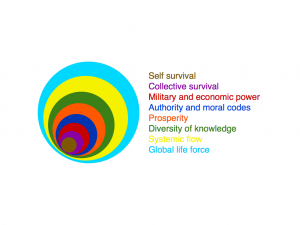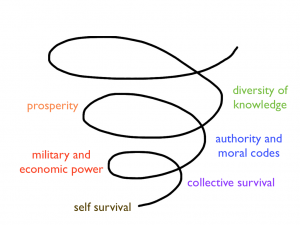As we approach the winter solstice and the darkness increases, my energy levels are low. It is hard to get out of bed in the morning and get the day underway. From a life cycle perspective, winter is time to rest, from the activities of the fall harvest and for spring and summer’s growth. I am torn; I feel the pull of rest I feel that there is much for me to be doing – I should be busy.
In this time of darkness I feel adrift, in the increasing gray nowhere described in John O’Donohue’s Blessing, “The Time of Necessary Decision” (yesterday’s post.) As regularly happens, quite naturally, I seem to have lost track of my destination. Without clear purpose, I waver as I decide what to do with my time and energy.
Today’s realization was that I am overthinking things and not listening to my Higher Self. Even as I wrote in my journal about it, I felt like I was overthinking, so I had a conversation with my Higher Self. Here is what transpired:
self: Have I been thinking about how to live from my spirit instead of really doing it? Being it?
SELF: Yes. Yet you’re not far.
Release.
self: Release what?
SELF: Release self.
self: That is my learning curve?
SELF: Yes.
self: A lot of self is released already.
SELF: Yes.
self: There’s more.
SELF: Of course.
self: That next bit is hard to figure out. I’m not sure where it is, where to go to release it.
SELF: Don’t look for it, just let it go. To look for where is about control.
Let it go.
self: Is that what I need to rest into? Over the next few weeks and into the darkness? Just sit with what needs to be let go and let it go? I imagine right now some grieving, but its weird not knowing what I am releasing.
SELF: Sit in the darkness. It will start getting lighter soon. The self to release will find you.
Remember that what you are growing into will transcend and include what you are growing from. You are not jettisoning anything, so no need to fear losing anything but what is not needed anymore. It’s still around, repurposed.
It is difficult and murky territory when in transition. Focus, learn and choose are three words that stood out for you as you explored the oracle card this morning. You are facing a soul-full challenge right now. On what will you focus, learn and choose?
self: I focus on reaching my fullest/highest evolutionary potential in my lifetime. I am learning to live from my spirit, my Self and all that I am, freely, expansively, deliberately, consciously. I choose to nourish my Being.
SELF: Ahhhh… Your energy has shifted.
self: This is a higher order of understanding. It’s not just look after self, it’s nourish self.
Today, I latched on to the higher-order purpose of my work. A moment to focus, to notice what I am learning, and to make a choice realigns to why I do what I do. I am more connected to my very existence. I am ready to settle into my work, both inwards and outwards, for the next two weeks until things start to get lighter. I can choose to get ‘busy’ and distract myself from the inner work at hand, or focus on it, to learn more about the choices I have.
The gray nowhere, as all seasons do, comes and goes. While it continues to get darker, while I continue to feel somewhat adrift, I feel more alive, connected to my personal journey that is necessarily part of the larger journey of humanity.
This bit that’s alive, connected to purpose, will steer me through all shades of gray of nowhere.


